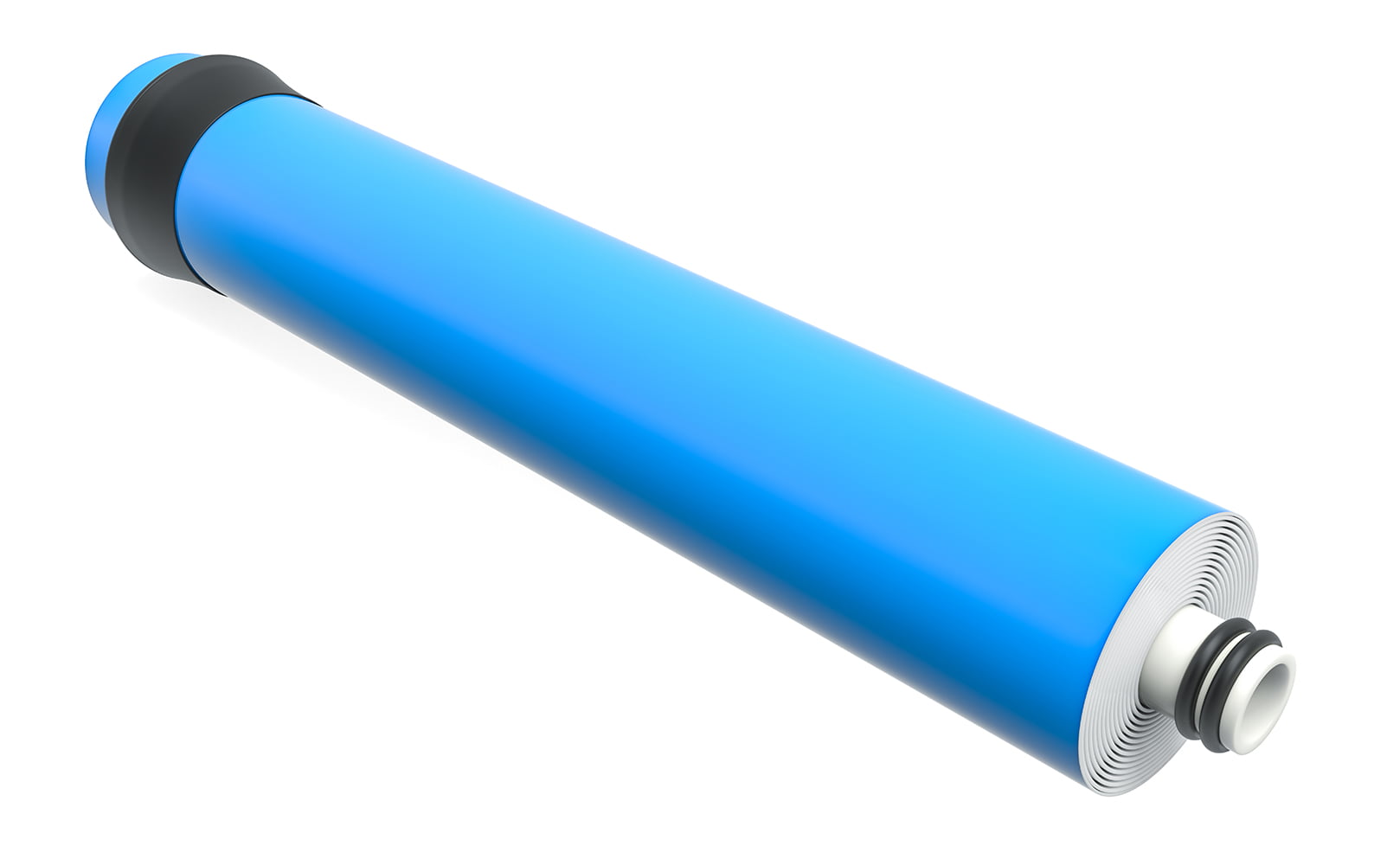How to Remineralize Reverse Osmosis Water the Right Way
Written by: Gene Fitzgerald // Last Updated: Jun 23, 2023
This page may contain affiliate links. If you buy a product or service through such a link we earn a commission at no extra cost to you. Learn more.
There are so many ways you could potentially remineralize your reverse osmosis water. A quick internet search suggests everything from remineralization filters to loading it up with sodium bicarbonate and lemon juice (no, we DO NOT recommend this).
The fact is, some remineralization methods are better than others.
Let’s take a look at them all so you can pick which one is right for you.
Key Takeaways
- There are several ways to remineralize RO water, but the best practices are to use a post-filtration remineralization, trace mineral drops, or an alkaline water filter pitcher.
- A remineralization post-filter enriches your reverse osmosis water with minerals automatically, so you don’t have to worry about it.
- Using drops or other mineral blends means that you’ll have to add them to your drinking water manually which is inconvenient.
- Alkaline water filter pitchers work similar to a remineralization filter stage: The water runs through the pitcher and gets enriched with minerals. The only issue here is the limited storage volume.
How to Remineralize Reverse Osmosis Water
So, how to remineralize RO water?
There are various methods to remineralize reverse osmosis water, and some are better than others. Municipal water is thought to contain up to 21 different trace elements, and reverse osmosis removes pretty much all of them.
RO water remineralization may be important to help with your electrolyte balance and to increase the dietary intake of trace minerals in people who may be deficient in them.
As such, it is essential to monitor which types of minerals are being reintroduced to the water. To maintain healthy levels of electrolytes in RO water, it is important to replenish it magnesium, calcium, potassium, and more.
Be aware, though: Too much of one mineral could lead to adverse health consequences, such as too much sodium causing hypertension.
Using a Remineralization Filter
Most under sink reverse osmosis systems can be customized a little, with the addition of extra filtration steps. One of these is a remineralization filter. This post-filter is designed to adjust the water’s pH and reintroduce trace elements and minerals that have been filtered out, such as calcium carbonate, potassium chloride, magnesium sulfate, and sodium bicarbonate.
Which minerals are added can vary from filter to filter. Simply put, not all use the same mineral blend. By far the important minerals to go with are calcium, magnesium, and potassium. Sodium is also essential, but most of us already consume too much sodium as part of their diet, so there’s usually no need to worry about it.
Using Mineral Drops and Other Electrolyte Blends
Mineral drops or electrolyte blends are other ways to remineralize RO water. They are usually specially formulated to contain a balance of minerals, or you can purchase the minerals separately and mix and match them. Be careful with this though so you aren’t adding an excessive amount in, as it could lead to health complications.
The downside with using mineral drops or blends is that you need to add them into your reverse osmosis water manually, either each time before you drink or by preparing larger batches (usually one gallon of purified RO water).
Using an Alkaline Water Pitcher
Alkaline water pitchers work the same way as remineralization filter stages: They enrich the water with minerals which also raises pH.
If using one of these, you would fill the pitcher directly from the reverse osmosis faucet, and keep it on hand. It works well for small amounts of water prepared in advance but not more significant amounts.
How to Remineralize Reverse Osmosis Water Naturally
If you want to remineralize your RO water using a more ‘natural’ method, then this may be one to test out:
Adding Mineral-Rich Salts (e.g., Himalayan)
Adding a mineral-rich salt such as dead sea salt or Himalayan salt is often suggested as a way to remineralize RO water.
However, it remains controversial, with some sources saying you would need to add about 30 grams of it to have any significant difference in terms of mineral content. Only ¼ to ½ of a teaspoon is suggested for remineralizing water per gallon, however, in order to avoid excessive sodium levels.
It definitely improves the taste of the water and may remineralize it to some extent, but time and further research are needed.
What Are the Benefits of Reverse Osmosis Remineralization?
Better-Tasting Water
RO water is often described as tasting flat or bland. Dissolved solids and minerals in water are what give water it its ‘taste’ (it’s why some water tastes better than others!). Take them away, and you are left with pure H2O that doesn’t taste like much at all. This can be a negative for some, who would prefer their drinking water to have some flavor.
Remineralizing reverse osmosis water can add back some of these minerals, giving the water a more pleasant, naturally ‘crisp and clean’ taste.
Proper Hydration
If your water doesn’t taste good, you might not want to drink it. Remineralizing RO water can lead to improved hydration because better-tasting water means a better chance that you will willingly drink it!
Essential Minerals
Most minerals in drinking water contribute only about 5% of our daily intake or less. Consequently, in the case of people with healthy diets, at least 95% of their minerals come from food. Still, you should try getting that extra 5%, more so if your diet isn’t the greatest.
What Happens to the Minerals in Water During Reverse Osmosis?
Minerals are removed in reverse osmosis by the semi-permeable RO membrane. Minerals are usually larger than the pores on this membrane. When the water pressure pushes the H2O molecules through, the minerals are left behind the membrane and flushed away with the waste water.
This is exactly the same process that also rejects all the different pollutants such as lead, chromium 6, cysts – you name it.
In essence, reverse osmosis is a very powerful water purification process that does not differentiate between healthy impurities and harmful contaminants; everything gets removed!
What Minerals Are Being Removed?
RO removes pretty much all the minerals water may contain, but the ones listed are the main ones that have been identified in our drinking water:
- Chlorine
- Phosphorus
- Molybdenum
- Fluorine
- Calcium
- Magnesium
- Sodium
- Potassium
- Ferrous iron
- Copper
- Zinc
- Manganese
- Iodine
- Selenium
- Iodothyronine
- Selenocysteine
- Boron
- Chromium
- Nickel
- Silicon
- Vanadium
Some of the most important ones, and the ones that should be the top priority for RO remineralization are:
Calcium
This nutrient is essential for strong bones, healthy teeth, blood clotting, nerve transmission, and muscle contraction. A calcium deficiency can lead to a wide range of health problems, including rickets, osteopenia, and osteoporosis.
Magnesium
Magnesium is an essential mineral that plays a crucial role in more than 300 metabolic reactions in the body. It helps to regulate the body’s temperature, maintain a regular heartbeat rhythm, and support healthy nerve and muscle functions. Magnesium deficiency symptoms include muscle cramps, headaches, fatigue, and difficulty sleeping.
Potassium
Potassium is an important electrolyte that helps maintain heart muscle contractions, regulate blood pressure, and support healthy nerve functions. A potassium deficiency can lead to fatigue, irregular heartbeat, and weak muscles.
Sodium
Sodium helps to regulate the fluid balance in humans, aids in nerve conduction and muscle contraction, and maintains normal blood pressure. Too much sodium can harm health, but too little can lead to fatigue, irritability, headaches, nausea, confusion, muscle cramps or spasms, and light-headedness.
Phosphorous
Phosphorus is an essential mineral found in many foods, such as legumes, grains, and nuts. It helps to produce energy from food, build strong bones and teeth, support nerve transmission, and is essential for proper kidney function. A phosphorus deficiency can cause weakness, fatigue, and bone pain.
So Is Drinking Plain RO Water Bad for Your Health?
In most cases, drinking reverse osmosis water is not bad for your health. In fact, if it eliminates dangerous contaminants from your water, it is better than drinking non-RO water that still contains impurities and minerals.
Minerals in drinking water contribute only about 5% of our dietary intake; the rest comes from food, so a balanced diet should have your bases covered. Still, the WHO recommends reintroducing minerals back into RO water (especially calcium and magnesium).
Should Everyone Remineralize Their Reverse Osmosis Water?
According to the WHO, yes, everyone should remineralize their RO Water. Again, the minerals that are added to remineralize the water should be in the correct proportions.
Some may also want to remineralize their water for the taste, as reverse osmosis water can be a bit dull. In this case, adding minerals specifically for flavor is acceptable, safe, and beneficial, as you’ll be more likely to drink the water.
If you have any questions about how to remineralize RO water please don’t hesitate to leave a comment below!
Information provided on BOS is for educational purposes only. The products and services we review may not be right for your individual circumstances.
We adhere to strict editorial guidelines. Rest assured, the opinions expressed have not been provided, reviewed, or otherwise endorsed by our partners – they are unbiased, independent, and the author’s alone. We fact-check all content for accuracy. It is accurate as of the date posted and to the best of our knowledge.




